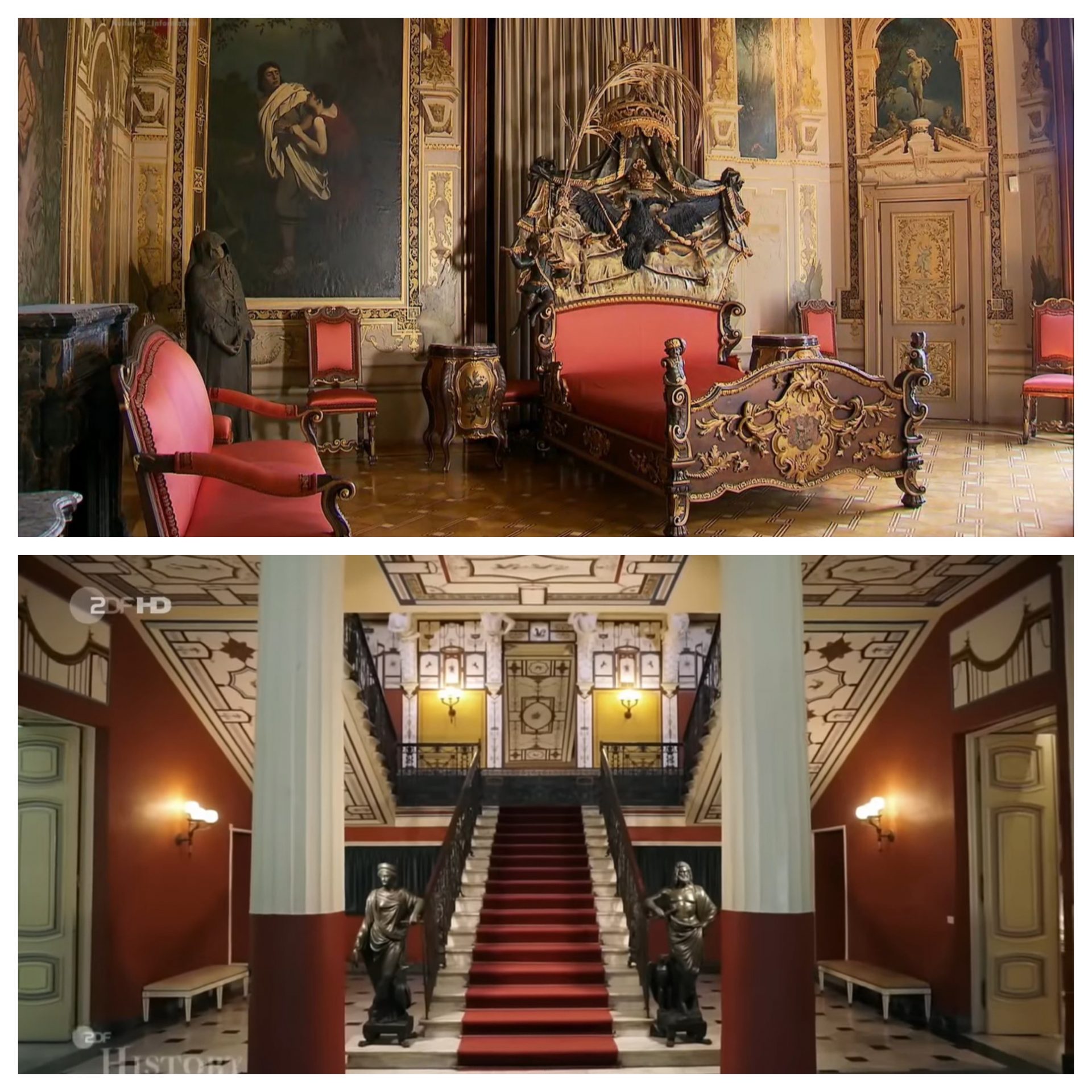Experience Travel Insights
Gilded Cages & Golden Cabbages: Vienna’s Radical Transformation to Secessionism
by Long Lin-Maurer • September 23, 2025

Vienna’s Transformation to Secessionism: From Ringstrasse Splendor to Modern Art
To walk through Vienna is to read a story written in stone and stucco, a narrative of imperial ambition, bourgeois aspiration, and radical artistic rebellion. Nowhere is this story more dramatic than in Vienna’s transformation to Secessionism at the turn of the 20th century. This period saw the city build the monumental Ringstrasse, only to witness its own children, the members of the Vienna Secession, revolt against the very aesthetic it had perfected. This was not merely a change in taste; it was a profound cultural shift to Secessionism, a battle for the soul of a modernizing city, played out on its boulevards, in its salons, and across its canvases.
Come and experience travel!
Personally designed, seamlessly delivered – your journey, our expertise!
We are a boutique travel agency and consultancy specializing in Hub & Spoke Tours across Central Europe, the Benelux and the Dolomites.
The Ringstrasse: A Dream in Stone
In 1857, Emperor Franz Joseph I decreed the demolition of Vienna’s medieval city walls. This was more than an urban planning decision; it was a symbolic act, opening the imperial capital to a new era of liberal progress and commercial power. The vast space created became the Ringstrasse, a grand circular boulevard destined to be the showpiece of the Austro-Hungarian Empire. The style chosen to line this new artery was Historicism, a deliberate and magnificent borrowing from the great architectural epochs of the past.
As you stroll along the Ring, you witness a parade of these revivalist styles, each carefully selected to match the function of the building. The Parliament, with its Corinthian columns, invokes the democracy of ancient Greece. The City Hall, or Rathaus, reflects the civic pride of Flemish Gothic cathedrals. The State Opera and the Burgtheater are masterpieces of neo-Renaissance and neo-Baroque splendor, celebrating the high culture of the court.
This was the architecture of the ascendant liberal bourgeoisie. They were industrialists, bankers, and professionals, many of whom were from newly emancipated Jewish families who, after the 1867 constitution granted them full civil rights, rose to unprecedented prominence. Families like the Ephrussis, the Todescos, and the von Gutmanns built magnificent palais along the Ring, their opulent homes a testament to their success and a claim to their place in Viennese society. The Ringstrasse was their stage, a spectacular assertion of a rational, cultured, and prosperous world order. It was a dream of perpetual stability and progress, rendered in marble and gold leaf—a dream that the coming evolution towards Secessionism would soon challenge.
Cracks in the Gilded Façade: The Cultural Move Towards Secessionism
Yet, beneath this polished surface of Ringstrasse historicism, a deep sense of unease was brewing. For a younger generation of artists and thinkers in fin-de-siècle Vienna, this aesthetic felt like a dishonest costume. This growing dissatisfaction was a key driver in the move towards Secessionism. They saw its eclectic mix of borrowed styles not as a tribute to history, but as a failure to create a form true to their own time—a façade hiding the complex, often dark, realities of modern life.
This was the Vienna of Sigmund Freud, who was excavating the hidden depths of the human psyche, revealing the irrational drives that lurked beneath the conscious, civilized mind. It was the Vienna of Arthur Schnitzler, whose plays and stories exposed the moral hypocrisies of the bourgeoisie. It was the Vienna of Gustav Mahler, whose symphonies pulsed with a profound sense of existential angst and a longing for transcendence, a stark contrast to the light waltzes that had once defined the city’s musical identity.
Simultaneously, the political liberalism that had built the Ringstrasse was under threat. The rise of mass politics brought with it new, virulent strains of nationalism and antisemitism, personified by the populist mayor Karl Lueger. The very Jewish families who were patrons of high culture and architects of Viennese prosperity found themselves the targets of a growing political movement that sought to exclude them. The dream of harmonious integration, so powerfully symbolized by the Ringstrasse palaces, was proving to be tragically fragile.
Come and experience travel!
We design bespoke travel experiences with a perfect balance of cultural depth, efficiency and comfort.
Specializing in seamless hub-and-spoke journeys, we create well-paced, immersive itineraries tailored to your interests.
Ver Sacrum: The Sacred Spring of the Secession
It was out of this fertile ground of creative energy and social tension that the emergence of Secessionism became inevitable. In 1897, a group of progressive artists, led by the painter Gustav Klimt, formally broke away—or seceded—from the conservative, state-sponsored Künstlerhaus, Vienna’s official artists’ association. Theirs was a declaration of war against the establishment, a mission to create a new, living art for the modern age, marking the official Secessionist breakthrough.
Their motto, emblazoned above the entrance of their purpose-built exhibition hall, was “To every age its art, to every art its freedom” (Der Zeit ihre Kunst, der Kunst ihre Freiheit). This building, the Secession Building—a stark white cube crowned with a delicate, gilded dome of laurel leaves, affectionately nicknamed the “Golden Cabbage” by the Viennese—was their temple and their manifesto. It was a radical departure from the neo-Baroque palaces of the Ring.
The Secessionists, including artists like Koloman Moser, and architects such as Josef Hoffmann and Joseph Maria Olbrich, sought a Gesamtkunstwerk—a total work of art—where painting, architecture, and decorative arts would be unified in a harmonious whole. They looked to nature for inspiration, developing the sinuous, organic lines of the Jugendstil (Art Nouveau). They championed honesty in materials and functionality in design, ideas that would lay the groundwork for 20th-century modernism. Architect Otto Wagner, once a designer of historicist buildings on the Ring, became a key convert, famously declaring that “something impractical cannot be beautiful.” His clean, functional designs for the city’s urban railway stations and the revolutionary Postsparkasse (Postal Savings Bank) demonstrated a new aesthetic that would be central to the development of Secessionism.
Significantly, the most enthusiastic patrons of this revolutionary new art were the very same culturally sophisticated, forward-thinking Jewish bourgeoisie. Families like the Wittgensteins and the Bloch-Bauers commissioned works from Klimt, Hoffmann, and Moser. They understood that this new art was a reflection of their own modern identity—cosmopolitan, intellectual, and untethered to the nostalgic, aristocratic traditions embodied by the Ringstrasse. In the shimmering gold of Klimt’s portraits, like that of Adele Bloch-Bauer, they saw a modern icon, a key expression of this artistic pivot to Secessionism.
A Legacy of Revolution: The Lasting Impact of the Secessionist Turn
The story of the transformation to Secessionism is the story of Vienna at war with itself. This Secessionist turn represents a dialogue between past and future, between illusion and reality. The Ringstrasse is the ultimate statement of 19th-century imperial confidence. In contrast, the rise of Secessionism represents the ambiguous, introspective, and often anxious dawn of the 20th century.
To experience Vienna is to walk between these two worlds. One can stand before the imposing grandeur of the State Opera, a monument to a world that believed in its own permanence, and then, just a few minutes away, confront the radical purity of the Secession Building, a defiant challenge to that very belief. One can trace the architectural journey of Otto Wagner from his early historicist apartment blocks to the stunning modernism of his Postal Savings Bank, witnessing the complete evolution towards Secessionism in a single artist’s career.
Come and experience travel!
Our expertise lies in uncovering authentic stories, hidden corners, and behind-the-scenes experiences that bring destinations to life.
We design customized mindful travel experiences that seamlessly integrate mindful eating and mindful indulgence. These experiences foster self-care and create transformational journeys that nurture mental well-being, promote sustainable travel, and strengthen family connections.
This journey is more than an art history lesson; it is an exploration of the forces that shaped the modern world. It reveals how a city’s architecture can be a mirror to its deepest hopes and fears, and how, in the crucible of fin-de-siècle Vienna, this spectacular shift to Secessionism arose from the tension between a glorious past and an uncertain future. To understand this transformation is to unlock the essential character of Vienna itself—a city of breathtaking beauty, profound intellect, and haunting contradictions.
Transformation to Secessionism: A Cultural and Historical Journey in Vienna
- Fin-de-Siècle Vienna: The Cultural Crucible
– An overview of the intellectual and cultural atmosphere in Vienna at the turn of the 20th century, fostering new artistic movements. - The Vienna Secession Movement
– The official website detailing the foundation, artistic philosophy, and historical significance of this groundbreaking art movement. - The Secession Building: A Symbol of Artistic Freedom
– Explore the architectural masterpiece designed by Joseph Maria Olbrich, the iconic home and declaration of independence for the Secession artists. - Gustav Klimt: Leading Figure of the Secession
– Information on Gustav Klimt, a founding member and the most prominent painter of the Vienna Secession, and his pivotal artistic contributions. - Otto Wagner’s Path to Modern Architecture
– Learn about Otto Wagner’s pioneering role in modern architecture and his profound influence on the Secessionist movement and urban development. - The Wiener Werkstätte: Design for a New Era
– Discover the influential design collective co-founded by Josef Hoffmann and Koloman Moser, promoting the “Gesamtkunstwerk” ideal in everyday objects. - Ver Sacrum: The Voice of the Secession
– Information on “Ver Sacrum,” the official publication of the Vienna Secession, showcasing its multidisciplinary artistic vision in print. - Josef Hoffmann and Koloman Moser: Visionary Designers
– The significant contributions of architects and designers Josef Hoffmann and Koloman Moser, key figures in both the Secession and Wiener Werkstätte. - Gesamtkunstwerk: The Total Work of Art
– An explanation of the concept of the “Total Work of Art,” a central tenet of the Vienna Secession’s artistic philosophy, integrating all art forms. - Vienna 1900: Cradle of Modernism
– A broader look at Vienna around 1900, highlighting the unique intellectual and artistic climate that defined the era and its enduring legacy of modernism.
